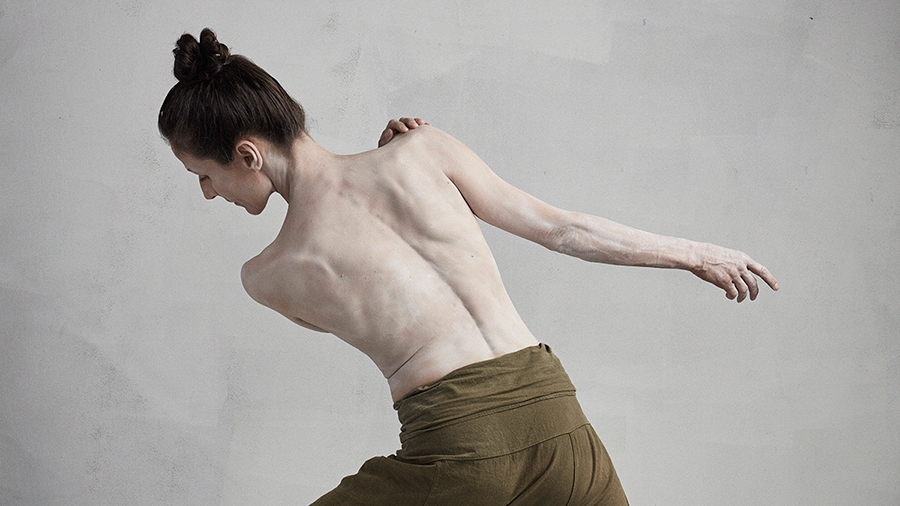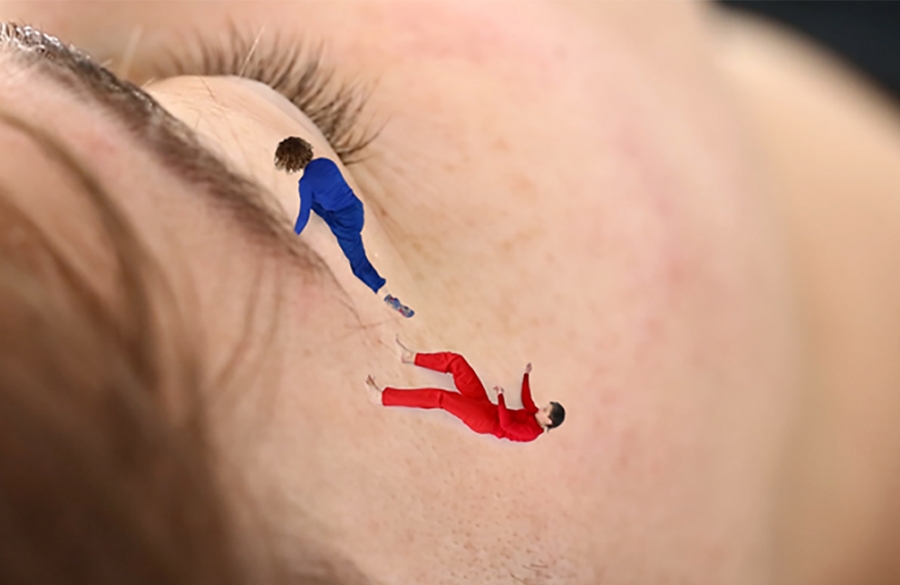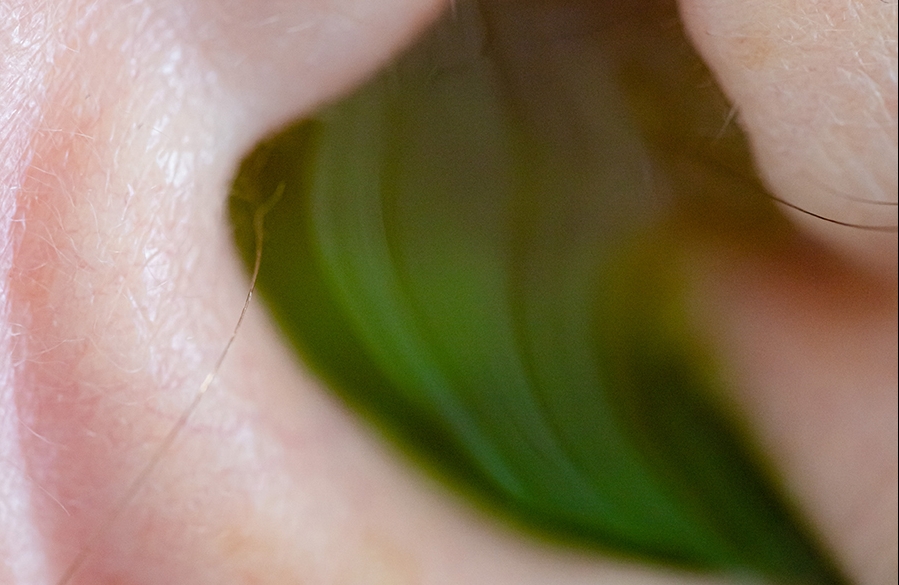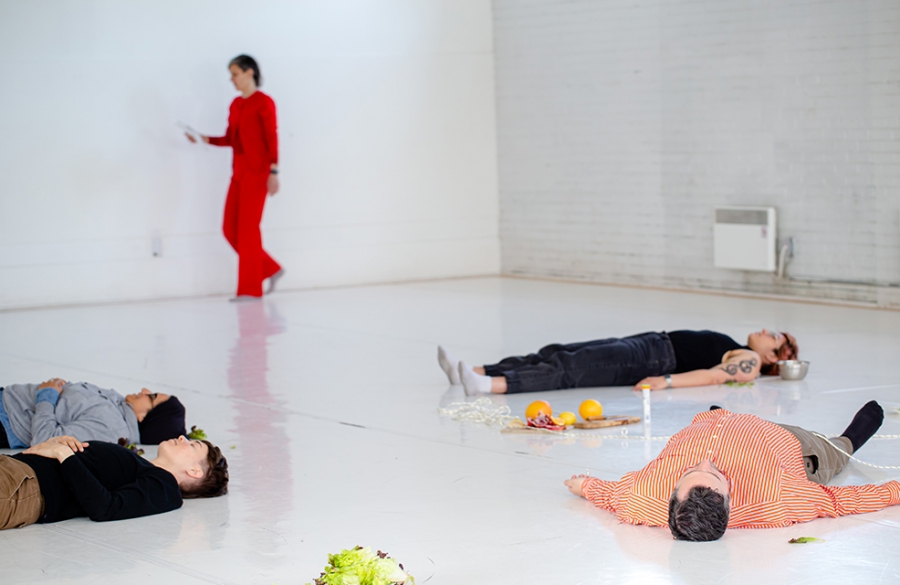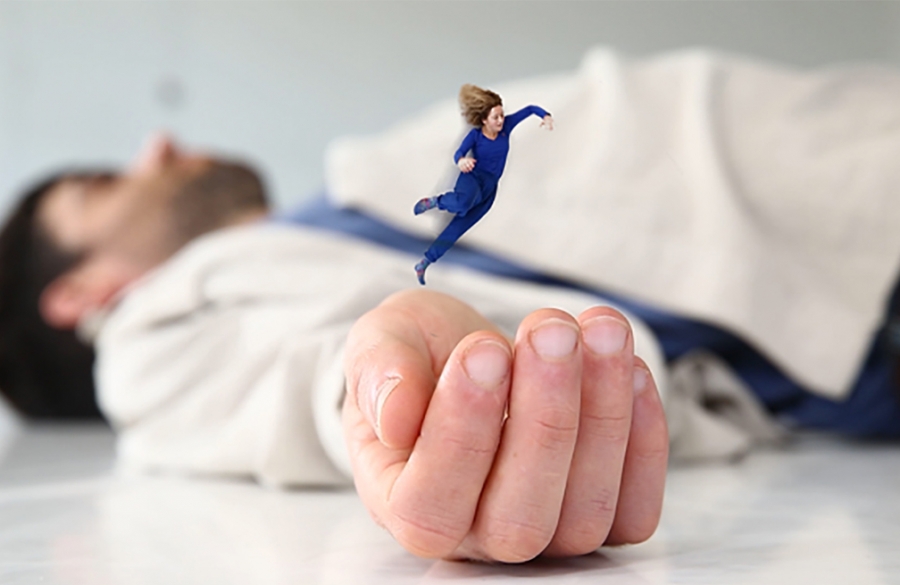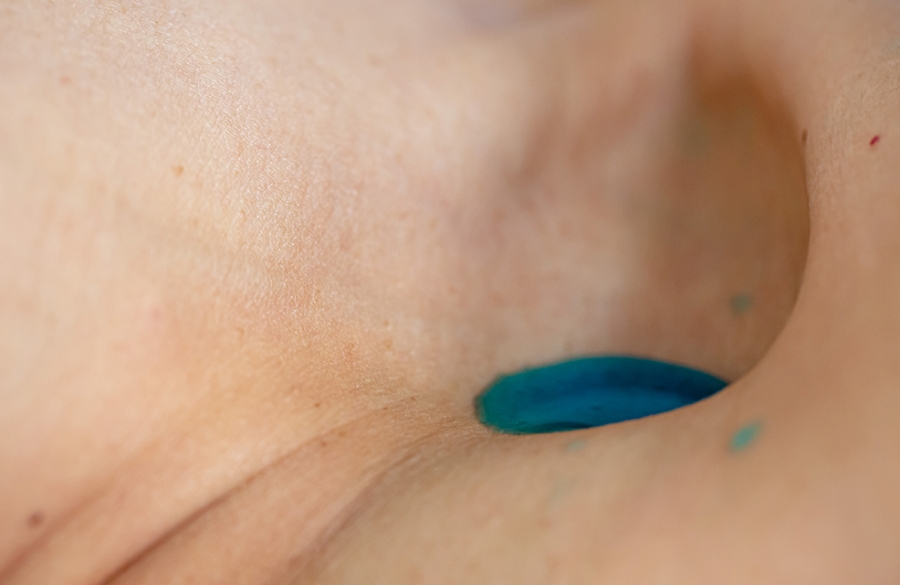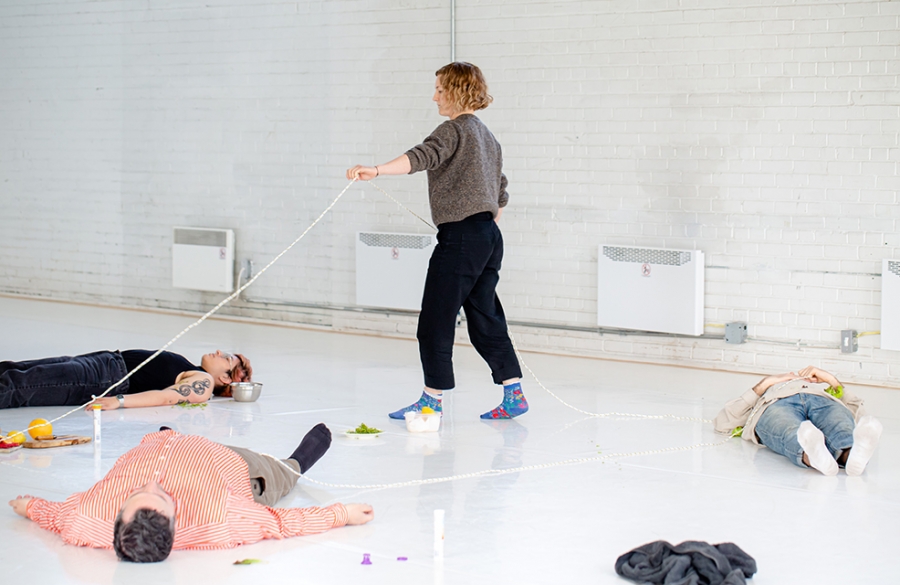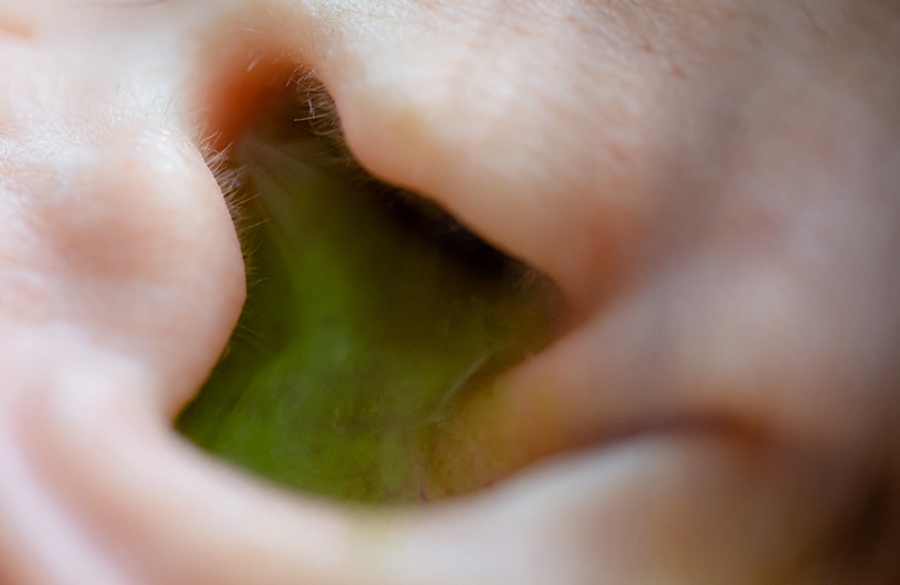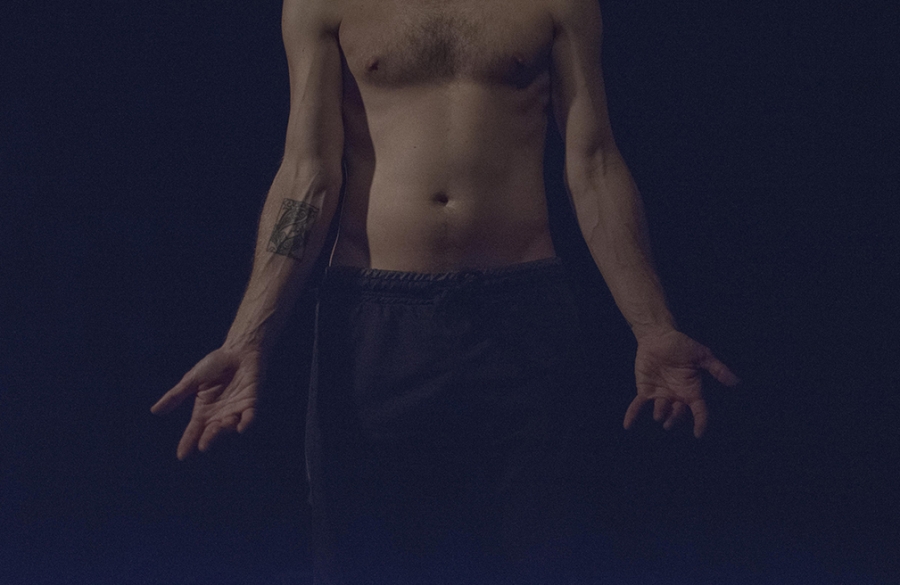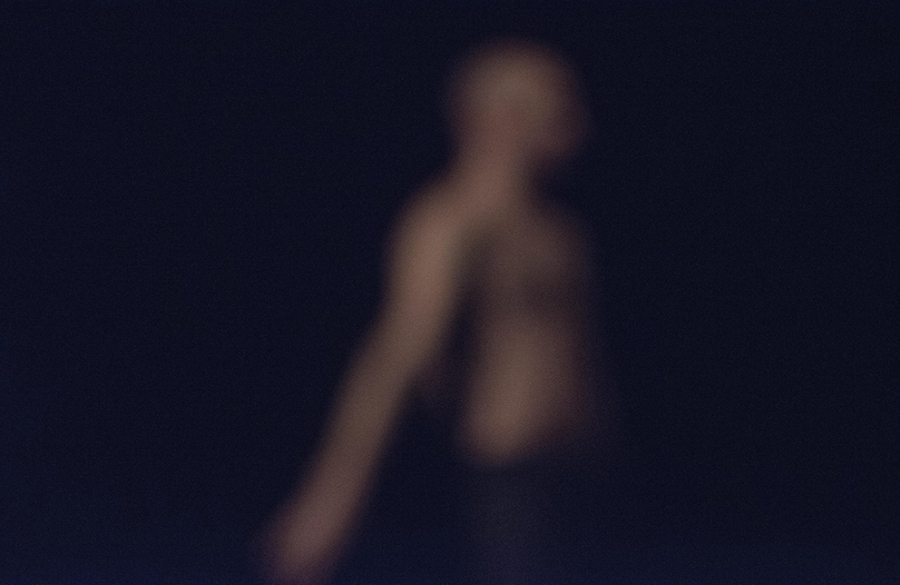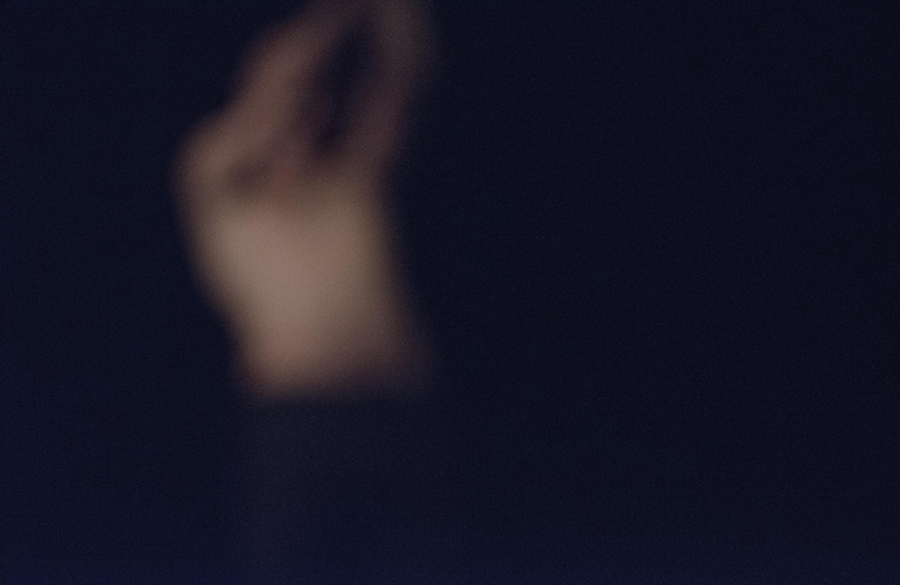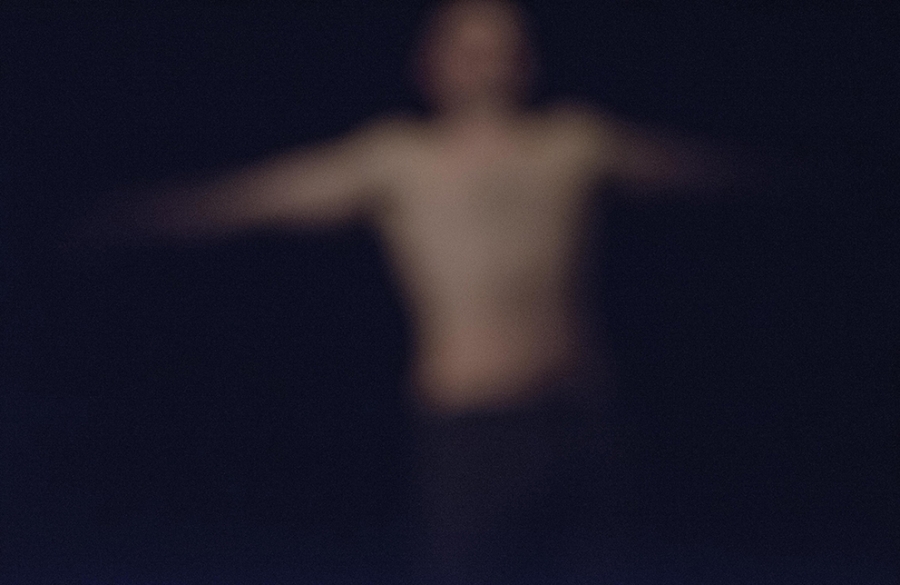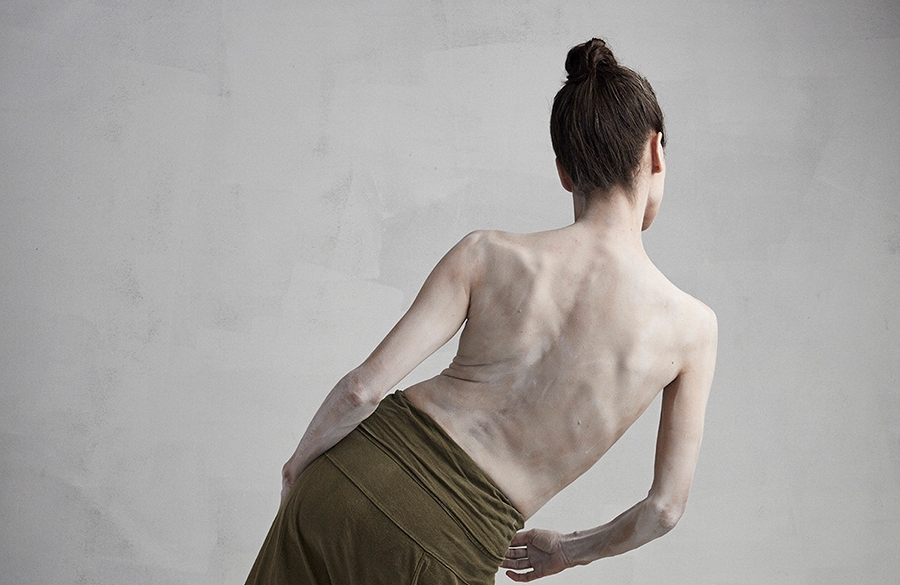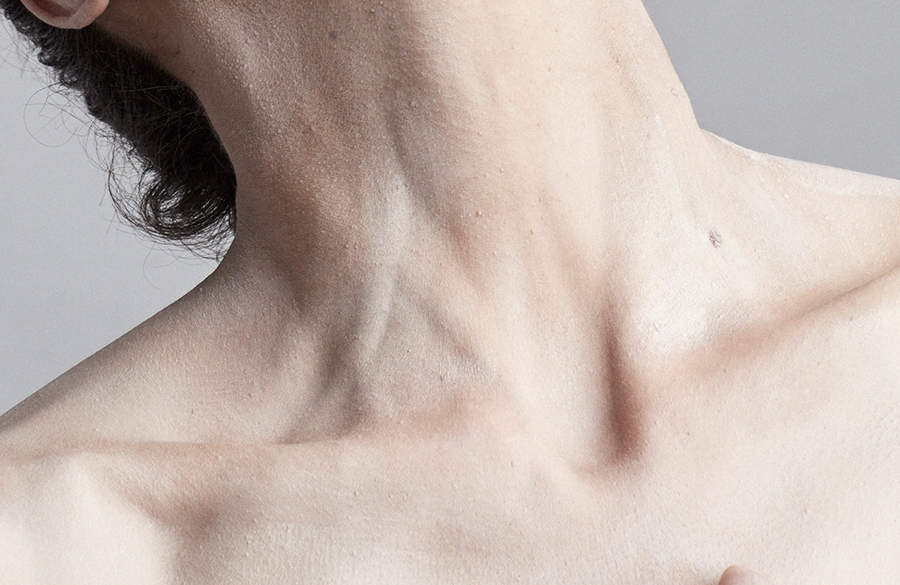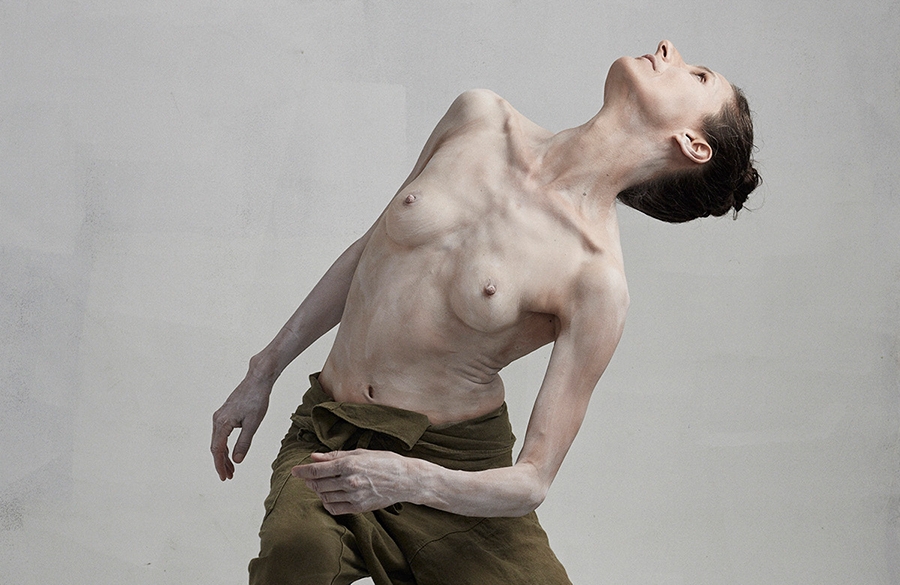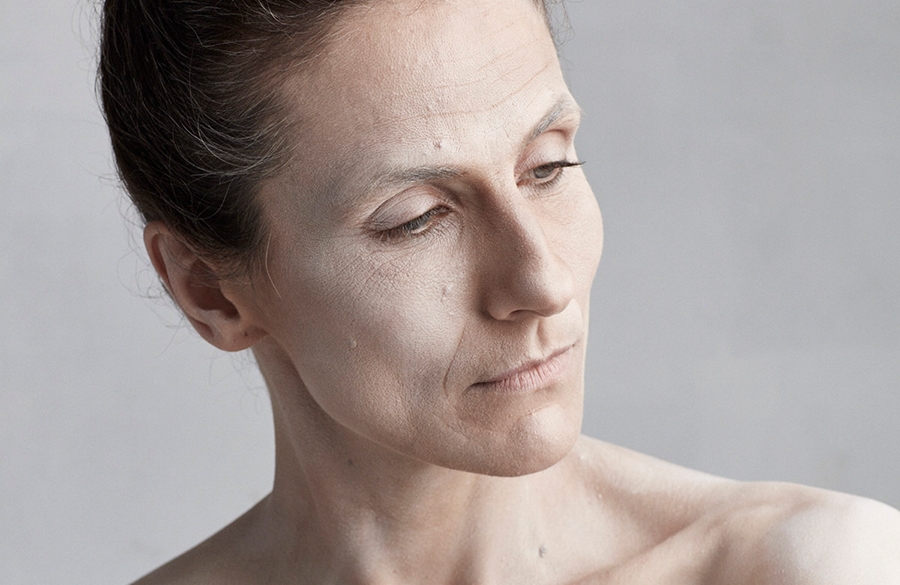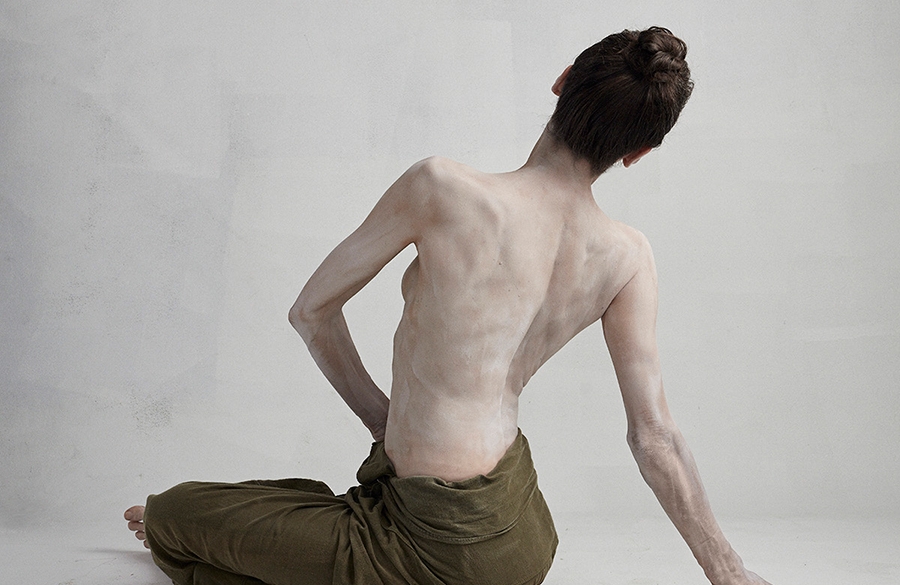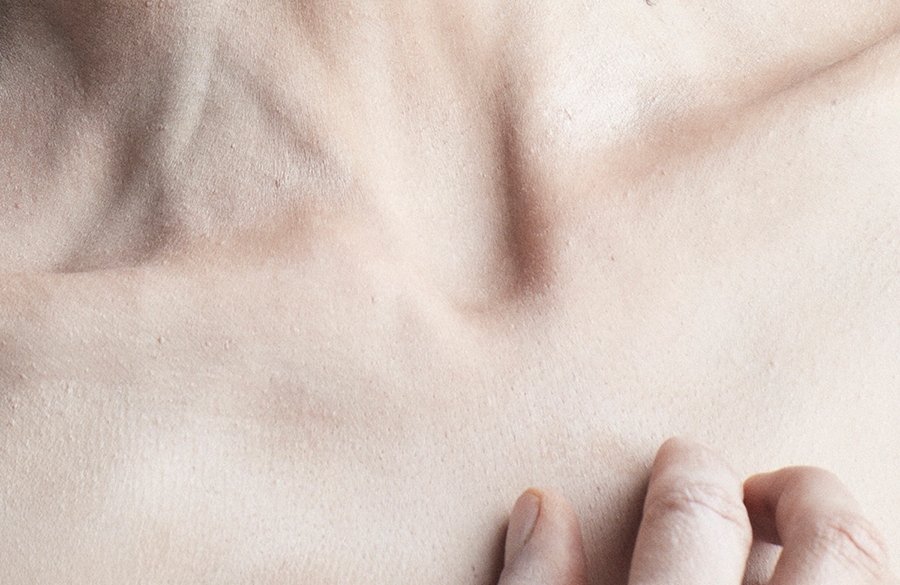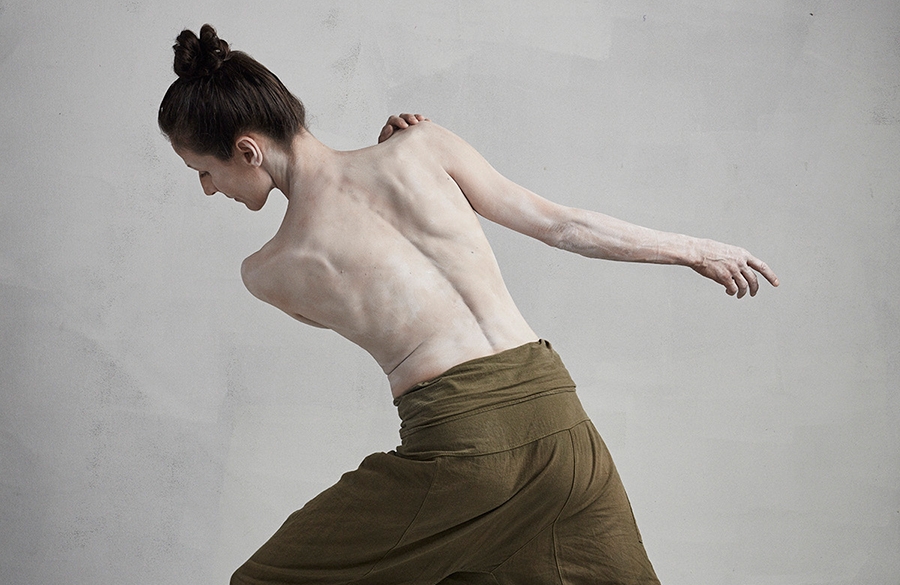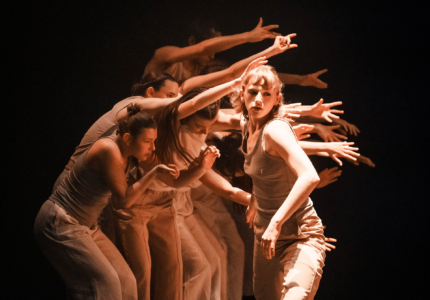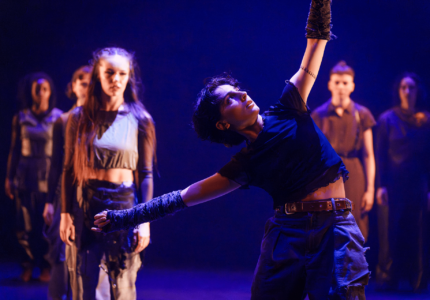Triple bill
Hanna Sybille Müller & Erin Robinsong + Hugo Dalphond + Hélène Messier
MARCH 26. 27. 28, 2020 - 7:30PM
MARCH 29, 2020 - 4PM
-
DISCUSSION WITH THE ARTISTS ON MAR. 27
Following the Gouvernement du Québec’s health emergency decree and request that theatres close their doors, this show is cancelled. For more information, click here
Hanna Sybille Müller & Erin Robinsong
Polymorphic Microbe Bodies
An open room. Or a living body. Or a laboratory of sensations. The audience is choreographed by the experience. A process inspired by the cohabitation of multiple species. How is a human being simultaneously host to a diversity of entities and one of the organisms of this ecosystem? How is this proliferation of life negotiated, experienced, felt? Alternately a germ, a bacterium, and an observer, the spectator is at once the canvas, the artwork, and the experiencer in this multisensory space where dance is not only seen but also perceived with all of one’s body.
Choreographer and poet Erin Robinsong
Choreographer and performer Hanna Sybille Müller
Performers and collaborators Diego Gil, Hanako Hoshimi-Caines, Emmanuel Jouthe, Kelly Keenan, Lara Oundjian
Dramaturg Adam Kinner
Biologist and scientific advisor Merlin Sheldrake
Drummer Jory Strachan
Erin Robinsong is a poet and interdisciplinary artist working with ecological imagination. Her debut collection of poetry, Rag Cosmology, won the 2017 A.M. Klein Prize for Poetry, and she has a chapbook forthcoming with House House Press. Collaborative performance works with Andréa de Keijzer and Hanna Sybille Müller include This ritual is not an accident (2016); Facing away from that which is coming (2017); and Müller’s revolutions (2018). Erin is convening a symposium on geopoetics with scholar Michael Datura in April 2020, and begins a PhD at Concordia in the fall, doing research-creation on emergent ecological thought in poetry.
Hanna Sybille Müller is a choreographer, dancer, and dramaturge living in Montréal. Her work focuses on language, movement, and their interrelations. She is interested in both language’s and the body’s strange, magic, and ordinary potencies and how they affect each other. Recent works include revolutions (2018) and transposition (2016). As a choreographer, she has collaborated with Andréa de Keijzer, Erin Robinsong, and Eva Meyer-Keller. Since immigrating in 2015, she has developed a social choreography called Soup-text Series. She studied dance at the Rotterdamse Dansacademie (RDA) and received a diploma in media studies at the Berlin University of the Arts (UdK) in 2012.
Diego Gil is a choreographer, performer, and philosopher who studied in Amsterdam at the School for New Dance Development (BA) and Das Choreography (MA), and who holds a PhD from Concordia University’s Interdisciplinary Humanities program. The title of his thesis is A Study on the “Intervals of Perception” and the “Architectures of Experience”: towards Schizosomatics. He combines the study of somatic practices with process philosophy to think alternative spaces for research-creation specific to the performing arts.
Hanako Hoshimi-Caines is engaged with dance, performance-making, and philosophy as a way to see, feel, and love better. And what she means by love is an ambiguous kind of knowledge that is embodied, transformative and involves time and intimacy with things. Interested in the performativity and humour of alternate logics, she gets much inspiration and material from the radicalness and disobedience of her kid’s senses. Hanako has worked and collaborated extensively in Montréal and internationally.
For 20 years now, Emmanuel Jouthe has created many pieces. In search of a sincere, close relationship between the spectator and dance, he encourages exploration and creation by questioning the body and movement through scenic territories and diverse artistic relations, as well as through concepts such as the Other, Beauty, and Authenticity. In addition to ÉCOUTE POUR VOIR, a flagship project created in 2008, his repertoire includes STACCATO RIVIÈRE (2007) and WHEN WE WERE OLD (2013), trio and duo in which he danced, as well as CINQ HUMEURS (2010) and SUITES PERMÉABLES (2017), group pieces.
Lara Oundjian is a shapeshifter, a strong and vulnerable flesh sack, a research junkie, a skill chaser, and a DIY experimenter. Transformation is the underlying event of her practice, the recurring ghost of her fascinations. She approaches performance through a practice of relationality, where the body is dynamically entangled with its environment. A Montréal-based dance artist and choreographer working with hybrid performance forms, Lara has presented work at Tangente, La Chapelle/Festival Phénomena, and Espace Mur Mur. Her solo Leaky Immediation / Transcorporeal Creeping will be presented at the OFFTA in May 2020. Lara was an artist in residence at Studio 303 in 2018. She is an artist in residence at the 3rd Floor Projects at Usine C from 2019-2021.
Adam Kinner (Washington, D.C., 1984) is an artist living and working in Montréal. Having trained in music, he makes work on the thresholds of performance, sound, and visual arts, collaborating with artists from dance and music. His work has been shown recently at the Foreman Gallery (Sherbrooke), the Art Gallery of York University (Toronto), Artexte (Montréal), and the Musée d’art contemporain des Laurentides.
Merlin Sheldrake is a tropical ecologist and microbiologist based in London. He received a Ph.D. in Tropical Ecology from Cambridge University. His research has focused on underground fungal networks in tropical forests in Panama, based at the Smithsonian Tropical Research Institute. He has lectured on a wide variety of topics from microbial subjects to Amazonian ethnobotany, from early-modern beer brewing practices to the relationship between sound and form in resonant systems. He is a musician and performer, playing piano and the accordion. He is currently writing a book on fungi, forthcoming with Random House in 2020.
Jory Strachan is a multi-instrumentalist, composer, songwriter, session artist, and seasoned touring musician. Strachan began his musical career touring with punk rock groups in his early teens and has since grown into a versatile musician schooled in many worlds. Strachan has worked with many artists in the studio and on stage; he has been featured on more than twenty recordings and commercial releases and has performed hundreds of concerts throughout North America and Europe. Now pursuing his own solo project Wrecker, Strachan continues to work and collaborate with numerous musicians and other artists in many capacities.
In our previous collaboration, revolutions, we conducted interviews on the topic of revolutions with experts from different fields. One of them was a biologist who spoke about the microbial communities that we are. An ‘individual’, biologically speaking, is a fiction: we are more like a planet, composed of ecosystems, inhabitants and relationships. In the studio we translated these ideas into choreographic material. This material didn’t end up in revolutions because it was too different from the rest; it was the beginning of a whole new piece. In creating Polymorphic Microbe Bodies, we asked ourselves: Why is dance, a somatic art, so often perceived primarily visually? How can we create a work that engages audiences’ felt, somatic senses? Following these questions meant a completely new process for us; we took turns giving each other sensorial and linguistic experiences and through trial, error, research, and play, this piece emerged.
Hugo Dalphond
Étude sur la pénombre
Lighting that is minimal rather than minimalist. Hugo’s scenography enables the study of the spectator-performer relation of copresence in a dim setting, through which a dramaturgy of darkness emerges. Since obscurity is hard for the eye to sustain, the situation engenders a different understanding of what is real. The limited perception of the space and of the artist’s movement blurs the borders between materiality and optical illusion. If the action doesn’t exist and it is the eye that creates its own dance, is the creator choreographing the experience as much as the body? What if the dysfunction of the senses opens up an alternative to reality?
Creator Hugo Dalphond
Performer François Richard
Composer Mathieu Seulement
Hugo Dalphond questions synergy between body, space, and light by elaborating and building scenographic devices aimed at initiating meetings. It is principally by making viewers and performers coexist within a same space and by modulating their perception of that very space that he creates alternative sensorial experiences. This becomes a reason to engage in different co-presence qualities and thus to become aware of our interactions and relation with others. Since 2015, he tackles these questions in a PhD, which has for its subject light installation and the spatial opportunity it offers to rethink our collective states. He also collaborates on various theatre and dance projects as a lighting designer and a scenographer.
Born in New Brunswick, François Richard completes his studies at the Royal Winnipeg Ballet School. His professional career has taken him to more than twenty countries with companies such as Canada’s Royal Winnipeg Ballet, Les Grands Ballets Canadiens, José Navas/Compagnie Flak, Van Grimde Corps Secrets, Sylvain Émard Danse, PPS Danse, and AP&A. He has worked closely with choreographers such as José Navas, Sylvain Émard, Isabelle Van Grimde, Virginie Brunelle, Andrea Peña, Edgar Zendejas, Victor Quijada, Anne Plamondon, David Rancourt, and Roger Sinha. In 2011 he danced in the short film ORA, produced by the NFB and nominated for a Genie Award in 2012. For his solo UNTITLED I, a collaboration with Andrea Peña, he won the prize for best performer at Festival Quartiers Danses and for best choreography at the Hong Kong International Choreography Festival in 2018. François has taught for schools and companies, including Concordia University and BJM. In 2014, he joined the board of directors and the teaching faculty of Danse à la Carte. Today he is a teacher and independent artist based in Montréal.
Mathieu Seulement is an electronic musician from Montréal. He started as a member of the trio Technical Kidman with whom he released two albums. Most recently, he debuted his new solo project SEULEMENT as part of OK LÀ’s 2018 line up. He also regularly works with multidisciplinary group projets hybris, for whom he acted as musician and composer on youngnesse, their latest show presented at La Chapelle Scènes Contemporaines in 2018, and on thegiftsofthegifted presented at DHC/ART as part of Montréal’s Nuit Blanche 2018. Additionally, he worked on the music and sound design for Montréal collective For Fauve and for Hugo Dalphond’s performative installation Dans l’idée de ne plus être ici, both presented at Tangente in 2018. Aside from working on his own music, he is currently working on a new creation with Hugo Dalphond and is a member of the new band Météo Ciel Bleu.
Étude sur la pénombre is part of a body of work on the use of light in art. I work towards extracting myself from tendencies that often reduce lighting to a technological innovation or to a method of composition for the spectacular. These ideologies value elaborated apparatuses detached from a sincere relation to the real, which to me fails to inform us on the world in which we live. On the contrary, I am interested in deepening the relational potential of light. I am interested in understanding how light composes space, how it reveals present bodies, how it carves spatialities, and how its behaviour alters our perception of time. The situations thus generated questions the immediacy of the experience and the sensitive dimension of our relationship to light, space, and bodies. I therefore explore a somatic approach that focuses mainly on the organization of the spectator’s attention and on the succession of different states of perception.
Hélène Messier
SOIE
How does one inhabit immobility? Evoking Butoh and art modelling, Hélène is looking to reach a meditative state that she shares with the audience. On a pedestal, in a room where walls and ceiling disappear, she creates a neutral space, at once nowhere and everywhere. Based on imaginary and sensitive impulses, she allows her body to be so that it can become a work of art, a landscape. Minimalist gestures, slowness, movement repetitions and a waltz with tempo establish a non-time, or a return to a universal time.
Choreographer and performer Hélène Messier
Lighting designer Hugo Dalphond
Composer Olivier Girouard
Rehearsal director David Rancourt
Hélène Messier was trained in Butoh, mainly by Mario Veillette, and has also studied with the following teachers: Denyse Fujiwara, Paul Ibey, Jocelyne Montpetit, Yoshito, Ohno, Diego Pinon, Martine Viale, and Yumiko Yoshioka. She has had the opportunity to dance for Mario Veillette, Katia-Marie Germain, and Ample Man Danse Company. She is currently engaged in a creative process with Sara Dell’ava. She also collaborates several times with Manuel Shink and Clarisse Delatour. Having completed a Bachelor’s degree in Choreography at Concordia University, her creative work is based on the sensitive imagination, accessing different states, as well as somatic work, creating deep, sensitive, and poetic worlds. Her creations have been presented at Short and Sweet (FTA), Danses Buissonnières, Piss in the Pool, and Quartiers Danses. Hélène completed her Master’s in Dance at UQAM, studying the relationship between a presence that is attentive to internal impulses and the experience of the spiritual in her practice of Butoh. She has also been practicing mindfulness meditation for about ten years, in addition to working as an artist’s model for four years. These practices also form part of her artistic approach and nourish her spiritual quest.
Hugo Dalphond questions synergy between body, space, and light by elaborating and building scenographic devices aimed at initiating meetings. It is principally by making viewers and performers coexist within a same space and by modulating their perception of that very space that he creates alternative sensorial experiences. This becomes a reason to engage in different co-presence qualities and thus to become aware of our interactions and relation with others. Since 2015, he tackles these questions in a PhD, which has for its subject light installation and the spatial opportunity it offers to rethink our collective states. He also collaborates on various theatre and dance projects as a lighting designer and a scenographer.
By accident, during an open house at the Conservatoire de musique de Montréal, Olivier Girouard discovers tape. Its evocative sound, its length, in meters. Tangible. He takes out the reel-to-reel from his school’s attic and create his first modern dance track. Musique concrète. Recordings. Mixing. Since then, he works in different art fields, namely performance art and public art.
An artist in dance, David Rancourt has mainly been a performer since graduating from LADMMI. His work with many choreographers brings him to experience a wide range of visions of art and movement, and allows him to dance on both local, national, and international stages. He collaborates with artists Alan Lake, Pierre-Paul Savoie and Annie Gagnon, and on projects with Caroline Laurin-Beaucage, Aurélie Pedron and Ariane Boulet. Passionate about the arts of movement and breath, he has been practicing the Continuum with Linda Rabin and Qi Gong with Marie-Claude Rodrigue for more than fifteen years. He is also part of the Fragments Libres school team. As a creator, his choreographic works take several forms: Temps / espace, an installation and performance as part of the first anniversary of Maison pour la danse in Québec City; and several short forms that fit into three PPS Danse productions: Chairs, Dance Lhasa Dance, and Body, Love, Anarchy Leo Ferré. As an outside eye and artistic advisor, let’s mention his collaborations with Edgar Zendejas at Ezdanza and with Myriam Allard and Hedi Graja from La Otra Orilla.
Through SOIE, I became interested in the attentive presence oriented toward inner impulses as a means to nourish spiritual experiences. For me, the spiritual is a quest of profound understanding by the intelligence of feeling of the fundamental essence of human beings in their relation to the world. What I convey in SOIE is this very quest. I explore it through notions of contemplation, of attentive presence, of laying bare, of openness between the world and my own intimacy. Strongly inspired by meditation, Butoh, and live modeling, SOIE is an introspective moment experienced from sculptural postures, as well as minimal, subtle, delicate or repetitive movements embodied because of an inner necessity. Laid bare, the body is simultaneously nature, landscape, and vehicle for something bigger.

